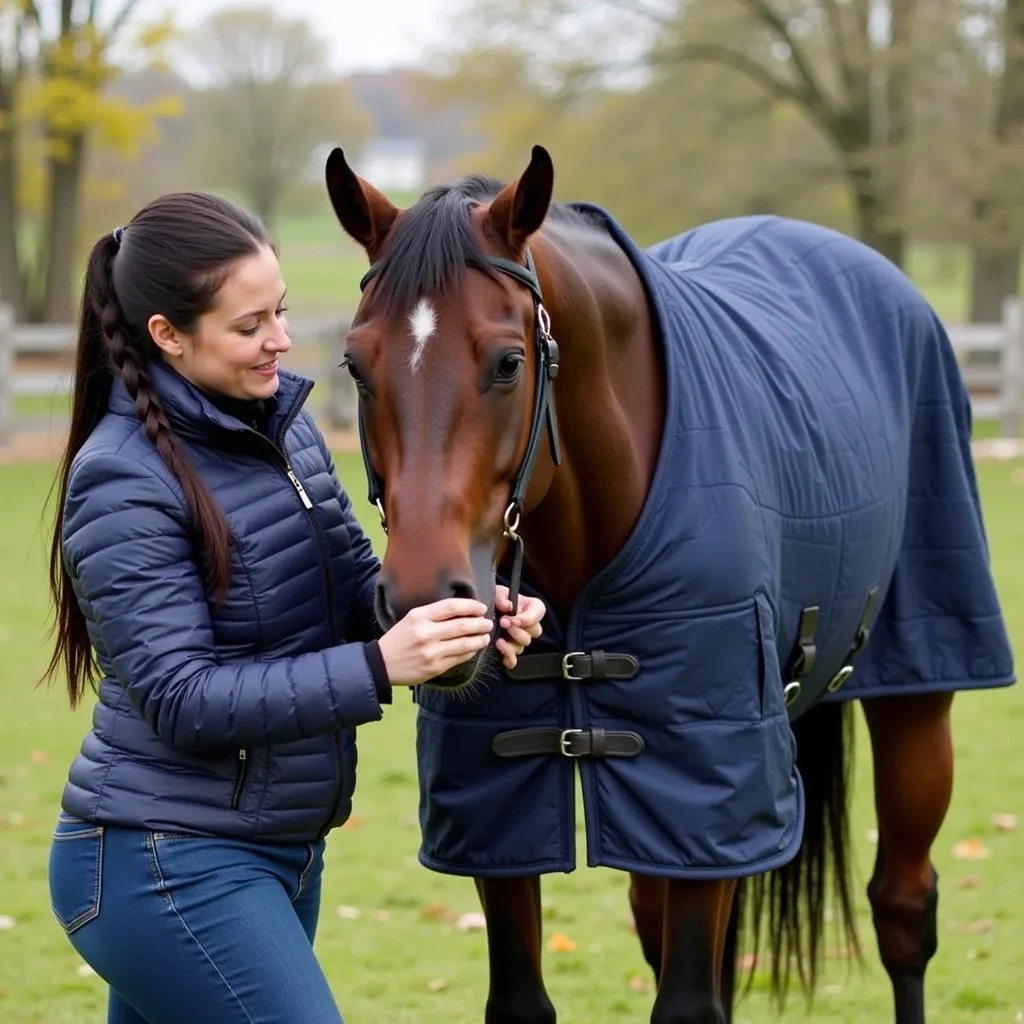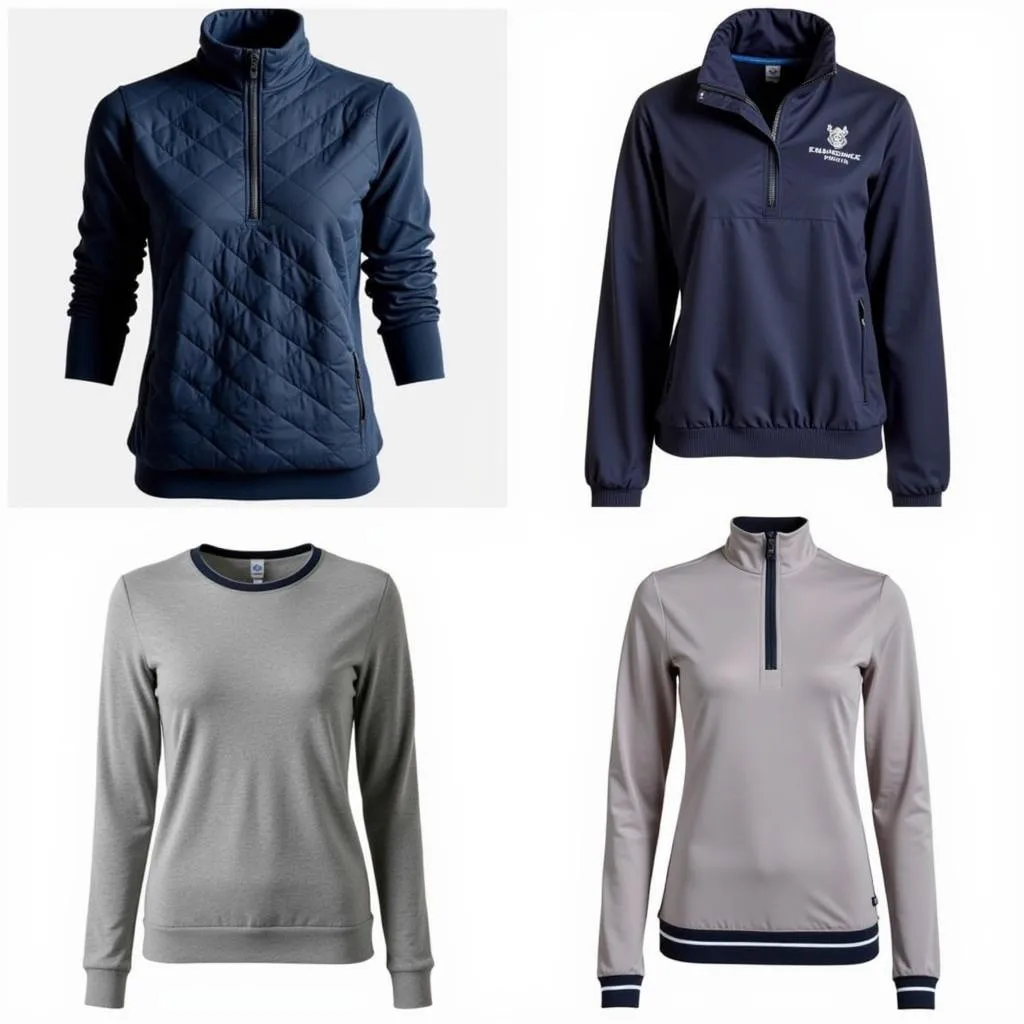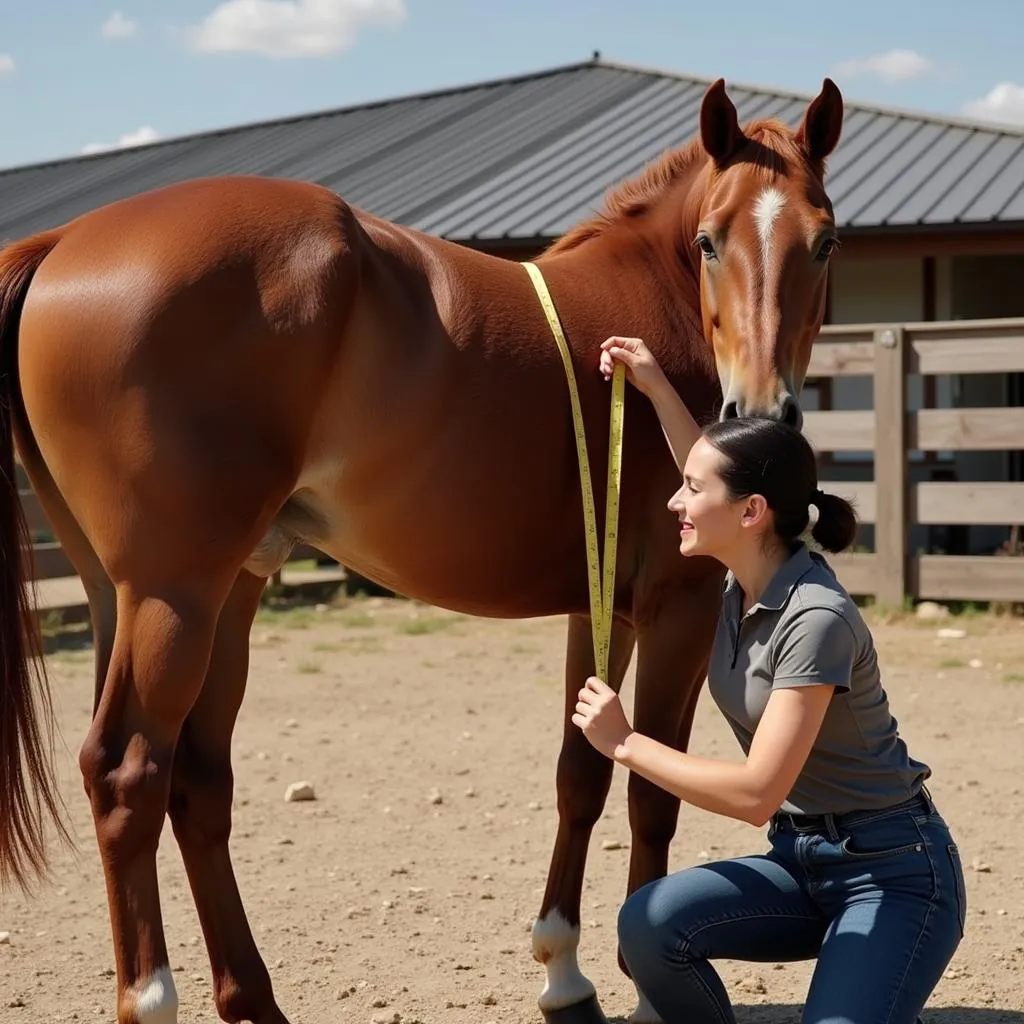Horse sweaters for women are an essential part of any equestrian’s wardrobe, especially during the colder months. Whether you’re a seasoned competitor or a leisurely trail rider, a good horse sweater can make all the difference in your horse’s comfort and performance. But it’s not just about keeping your equine friend warm; with so many styles and designs available, horse sweaters have also become a fashion statement in the equestrian world. This comprehensive guide will delve into everything you need to know about horse sweaters for women, from understanding the different types and materials to choosing the perfect fit and caring for your investment.
 Woman Carefully Putting a Sweater on a Horse
Woman Carefully Putting a Sweater on a Horse
Types of Horse Sweaters
Just like human sweaters, horse sweaters come in various styles, each designed for specific purposes and levels of activity:
- Stable Sweaters: Ideal for keeping horses warm while stabled, these sweaters are typically made from breathable fabrics like fleece or wool blends. They are designed to wick away moisture and prevent chills, especially after exercise or during cooler nights.
- Turnout Sweaters: These sweaters are perfect for horses who spend time outdoors, providing an extra layer of warmth and protection from the elements. They are usually water-resistant or waterproof and made from durable fabrics like nylon or polyester.
- Exercise Sweaters: Designed to be worn during training or riding, these sweaters help regulate a horse’s body temperature and prevent muscle stiffness. They are typically made from lightweight, breathable fabrics like moisture-wicking fleece or mesh.
- Show Sweaters: These sweaters are all about style! Used during competitions or exhibitions, they often feature elegant designs, luxurious fabrics, and intricate detailing to enhance the horse’s appearance.
 Various Styles of Horse Sweaters for Women
Various Styles of Horse Sweaters for Women
Choosing the Right Material
The material of a horse sweater plays a crucial role in its functionality and comfort. Common materials include:
- Fleece: A popular choice for its warmth, softness, and breathability. Fleece sweaters are lightweight, quick-drying, and relatively affordable.
- Wool: A natural fiber known for its excellent insulation properties, wool is warm, breathable, and naturally moisture-wicking. However, wool sweaters can be more expensive and require delicate care.
- Acrylic: A synthetic alternative to wool, acrylic offers similar warmth and softness at a lower price point. Acrylic sweaters are also easy to care for but may not be as breathable as natural fibers.
- Nylon and Polyester: These durable, water-resistant fabrics are commonly used for turnout sweaters. They provide excellent protection from wind and rain, but may not be as breathable as fleece or wool.
Finding the Perfect Fit
A well-fitting horse sweater is essential for your horse’s comfort and safety. An ill-fitting sweater can restrict movement, cause rubbing, or even pose a safety hazard during riding. To determine the correct size, you’ll need to take a few key measurements:
- Chest: Measure around the widest part of your horse’s chest, just behind the elbows.
- Length: Measure from the center of the chest (where the front legs meet) to the point where you want the sweater to end on the hindquarters.
- Neck: If the sweater has a neck cover, measure around the base of the horse’s neck where the mane begins.
Once you have these measurements, consult the manufacturer’s size chart to find the best fit. It’s always better to err on the side of a slightly larger sweater than one that is too tight.
 Woman Measuring Her Horse for a Sweater
Woman Measuring Her Horse for a Sweater
Caring for Your Horse’s Sweater
Proper care will extend the life of your horse’s sweater and ensure it continues to provide optimal warmth and comfort. Always refer to the care instructions on the garment’s label, but here are some general guidelines:
- Washing: Most horse sweaters can be machine washed on a gentle cycle with cold water. However, some delicate fabrics may require hand washing.
- Drying: Air drying is generally recommended for horse sweaters. Avoid using high heat in the dryer, as it can damage the fabric and shrink the sweater.
- Storage: Store clean and dry horse sweaters in a cool, dry place, away from direct sunlight or moisture. Avoid storing them in damp or humid areas to prevent mildew growth.
Expert Insights
“A well-chosen horse sweater is an investment in your horse’s well-being,” says Emily Carter, an equine veterinarian with over 15 years of experience. “Not only does it provide essential warmth during colder temperatures, but it can also help prevent muscle stiffness and improve circulation, particularly in older horses or those recovering from injuries.”
Beyond Practicality: Horse Sweaters as a Fashion Statement
In recent years, horse sweaters have transcended their purely functional purpose and become a stylish accessory for the fashion-conscious equestrian. From bold colors and patterns to intricate designs and embellishments, horse sweaters offer a way for riders to express their personal style and complement their horse’s appearance.
“The equestrian world has always had a strong sense of style,” says Sarah Williams, a renowned horse trainer and competitor. “Horse sweaters have become a fantastic way for riders to showcase their individuality and add a touch of flair to their riding attire, whether they’re in the show ring or enjoying a leisurely trail ride.”
Conclusion
Investing in a high-quality horse sweater is a wise decision for any horse owner who wants to keep their equine partner warm, comfortable, and stylish. By understanding the different types, materials, and fitting considerations, you can choose the perfect sweater to meet your horse’s individual needs and your personal preferences.
Remember, a happy horse is a warm horse, and with the right horse sweater, you can ensure your equine companion stays cozy and content throughout the colder months.
For any assistance, please contact us at Phone Number: 0772127271, Email: [email protected], or visit us at QGM2+WX2, Vị Trung, Vị Thuỷ, Hậu Giang, Việt Nam. We have a 24/7 customer support team.